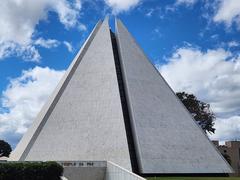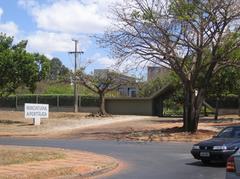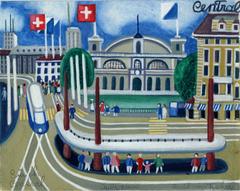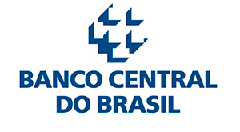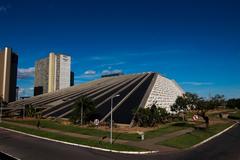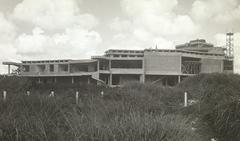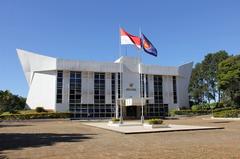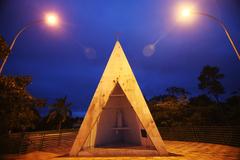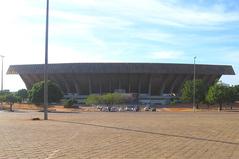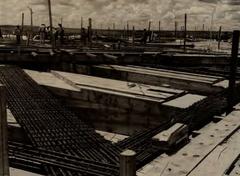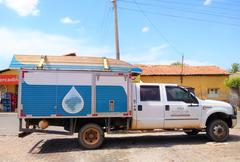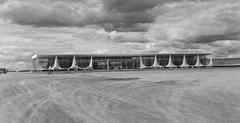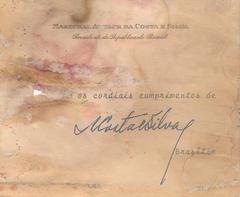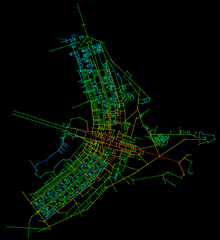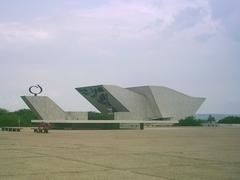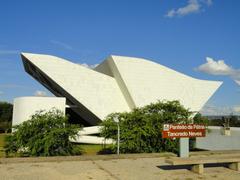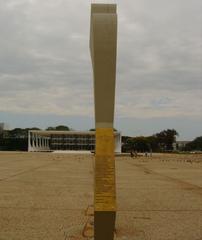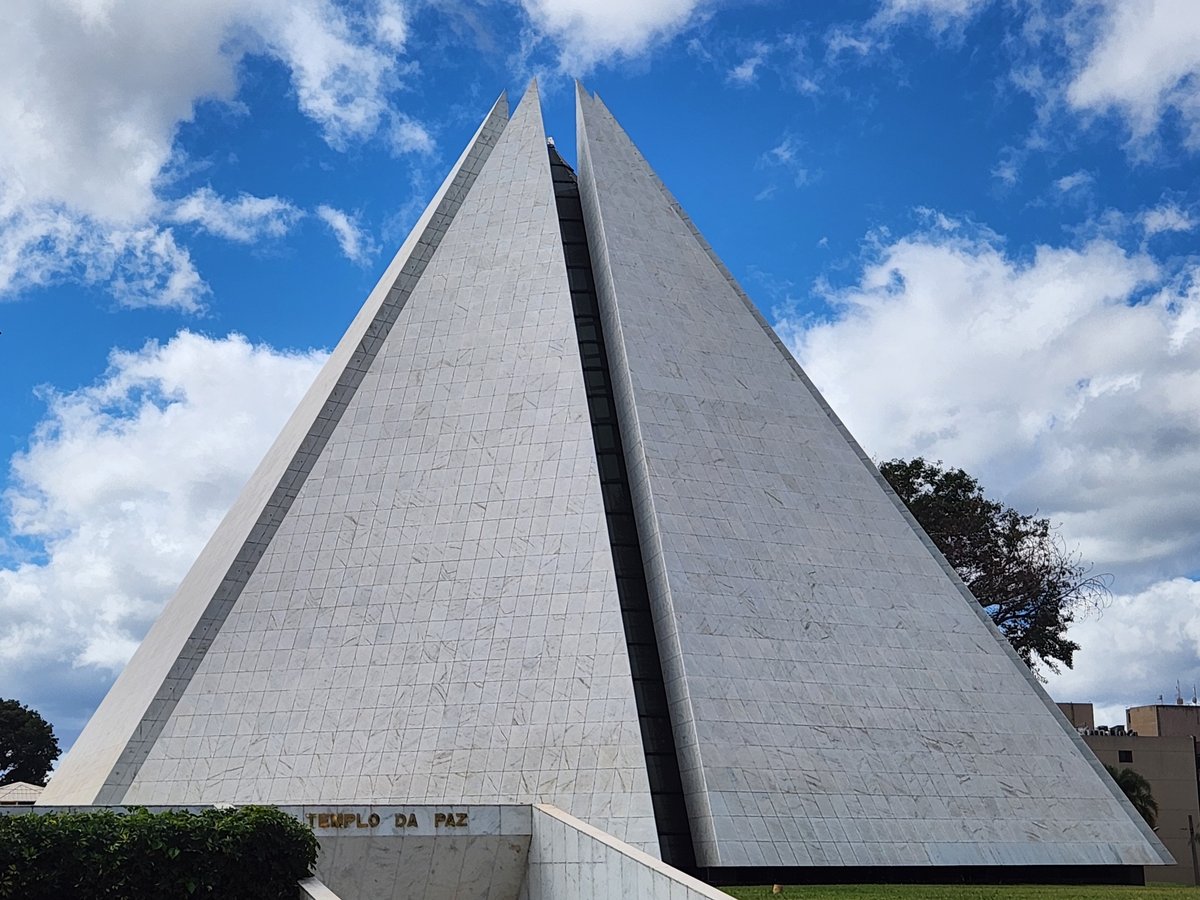
Templo Da Boa Vontade: Visiting Hours, Tickets, and Comprehensive Guide to Brasília’s Spiritual Landmark
Date: 14/06/2025
Introduction
The Templo da Boa Vontade (TBV), or Temple of Good Will, is one of Brasília’s most distinctive spiritual and cultural landmarks. Since its inauguration on October 21, 1989, it has welcomed millions seeking peace, unity, and cultural enrichment. The TBV stands out for its seven-sided pyramid architecture, crowned by the world’s largest pure quartz crystal, and for its ecumenical mission of fostering inclusivity and spiritual elevation. Whether you’re planning a visit for quiet meditation, architectural appreciation, or to explore Brasília’s historical sites, this guide delivers all essential information, from visiting hours and tickets to the temple’s deeper significance and practical visitor tips.
Table of Contents
- Overview and Significance
- Origins and Founding Vision
- Architectural Symbolism
- Core Mission and Principles
- Visitor Information
- Key Spaces and Symbolic Elements
- Rituals and Spiritual Experiences
- Art, Culture, and Memorials
- Visitor Experiences
- Frequently Asked Questions (FAQ)
- Conclusion & Next Steps
- Sources
Overview and Significance
The TBV, located in Brasília’s Asa Sul district, is recognized as both a spiritual sanctuary and an architectural marvel. Founded by José de Paiva Netto under the ideals of Alziro Zarur and the Legion of Good Will (LBV), it is open to all, regardless of faith or background. Its seven-sided pyramid symbolizes universality and spiritual ascent, while the central quartz crystal is believed to radiate positive energy.
The temple is a hub for meditation, inclusive ceremonies, and cultural exhibitions. Its location near Brasília’s major landmarks—such as the National Congress and the Cathedral—makes it a prime destination for both spiritual seekers and tourists (official TBV website; TBV Official Portal; Petit Futé).
Origins and Founding Vision
Inaugurated in 1989 by José de Paiva Netto, the TBV was conceived as “A Roof for Humanity”—a space uniting people beyond religious or cultural boundaries. Its foundation lies in the ecumenical principles of the LBV, promoting peace, charity, and enlightenment. The temple’s doors are open to everyone, offering solace and spiritual renewal (TBV Official Portal).
Architectural Symbolism
The Seven-Sided Pyramid
- Design: Created by architect R.R. Roberto, the pyramid features seven sides, 21 meters in height, and 28 meters in diameter—dimensions reflecting the spiritual importance of the number seven across cultures.
- Quartz Crystal: At its apex rests a 21 kg raw crystal from Goiás, symbolizing unity and spiritual energy.
- Interior: The main nave is illuminated by natural light, with a spiral pathway in black-and-white marble guiding visitors toward the central crystal.
Symbolic Spaces
- Spiral Path: Represents both the inward journey of self-discovery and the outward path of renewal.
- Mandala: A crystal panel represents total ecumenism.
- Artistic Altar: Incorporates motifs from Eastern and Western philosophies.
- Sacred Fountain: The Fonte Sagrada and the Ecumenical Christ statue emphasize spiritual renewal and universal love.
The architecture and interior design integrate symbolism from various traditions, emphasizing inclusivity, harmony, and spiritual elevation (Curta Mais).
Core Mission and Principles
The TBV’s mission centers on “Irrestrito e Total Ecumenismo” (Unrestricted and Total Ecumenism), welcoming people of every faith, background, and nationality. As the headquarters of the LBV’s global initiatives, it’s also a space for social outreach, moral education, and intercultural dialogue. Events and daily activities include meditation sessions, ecumenical prayers, and ceremonies for life milestones (TBV Weekly Agenda; Correio Braziliense).
Visitor Information
Visiting Hours & Tickets
- Main Pyramid (Nave): Open 24 hours, 7 days a week.
- Other Areas (Exhibition spaces, Egyptian Room, Mandala): Open daily, typically from 8:00 AM to 8:00 PM.
- Admission: Free of charge for all visitors. Donations to support humanitarian projects are welcome. Some spaces, like the Sala Egípcia, may require a small ticket purchase (Petit Futé).
Accessibility and Facilities
- Wheelchair Accessible: Ramps and elevators throughout the complex.
- Facilities: Include restrooms, water fountains, café/snack bar, gift shop, and an information desk.
- Dress Code: Modest clothing is required. Shoes must be removed before entering the central nave; trousers are provided if shorts are worn.
Guided Tours & Special Events
- Guided Tours: Available by appointment for individuals and groups, providing deeper insight into the temple’s history, symbolism, and mission.
- Special Events: The TBV hosts ecumenical gatherings, art exhibitions, peace celebrations, and ceremonies for baptisms, weddings, and memorials. Check the TBV Weekly Agenda for schedules.
Travel Tips & Nearby Attractions
- Location: SGAS 915 Lotes 75/76, Asa Sul, Brasília, Federal District 70390-150, Brazil.
- Getting There: Accessible by car, taxi, or public transport. Ample parking is available.
- Nearby Attractions: National Congress, Cathedral of Brasília, ParlaMundi da LBV, and other museums and cultural venues in the Asa Sul district.
Key Spaces and Symbolic Elements
- Nave and Spiral Walk: A meditative journey along a spiral path of alternating dark and light bands, symbolizing introspection and enlightenment.
- Central Quartz Crystal: Positioned at the pyramid’s apex, believed to concentrate positive energy and enhance meditation.
- Sala Egípcia (Egyptian Room): A ticketed meditation space adorned with Egyptian-inspired motifs, encouraging silent contemplation.
- Sacred Fountain (Fonte Sagrada): Space for purification and reflection.
- Art Gallery and Salão Nobre (Noble Hall): Exhibitions and ceremonies highlight the temple’s cultural richness.
- Memorials: Dedicated to Alziro Zarur and José de Paiva Netto, featuring personal artifacts and historical displays (Curta Mais).
Rituals and Spiritual Experiences
The Spiral Walk
- Practice: Visitors walk barefoot (or with provided slippers) counterclockwise along the dark spiral, symbolizing an inward journey, and return along the light spiral, representing renewal and enlightenment.
- Completion: The walk culminates at the altar, where visitors may offer prayers or reflections and drink “água fluidificada” (fluidified water), believed to be spiritually energized (Correio Braziliense).
Ceremonies and Activities
- Daily and Weekly Events: Include ecumenical prayers, meditation meetings, moral classes, and special ceremonies for life milestones. Schedules are posted on-site and online (TBV Official Site).
The Peace Route
- The TBV is a central stop on Brasília’s “Rota da Paz,” connecting spiritual and historical landmarks for intercultural understanding and reflection.
Art, Culture, and Memorials
- Artworks: The TBV features notable works by artists such as Sátyro Marques, Athos Bulcão, Moricone, Chico Metamorfose, Ula Haensell, and Guilherme Karan, as well as an 18th-century French bronze sculpture of Jesus.
- Art Gallery: Spanning 570 m², the gallery offers permanent and rotating exhibitions, fostering cultural dialogue.
- Memorial Spaces: Honor the founders and document the temple’s history and mission.
Visitor Experiences
The TBV has received over 30 million visitors since its opening, making it Brasília’s most visited monument. Many describe experiencing peace, spiritual renewal, and a sense of belonging, regardless of their religious background. Testimonials highlight the transformative nature of the spiral walk and the temple’s welcoming atmosphere (Correio Braziliense).
Frequently Asked Questions (FAQ)
Q: What are the Templo da Boa Vontade visiting hours?
A: The main pyramid is open 24/7; other areas generally open from 8:00 AM to 8:00 PM.
Q: Is there an admission fee or are tickets required?
A: Admission is free; some spaces may require a small ticket.
Q: Are guided tours available?
A: Yes, by appointment.
Q: Is the temple wheelchair accessible?
A: Yes, ramps and elevators are provided.
Q: What is the dress code?
A: Modest clothing is required; shoes are removed in the central nave.
Q: Can I take photographs inside the temple?
A: Yes, but please be respectful during ceremonies and meditation.
Conclusion & Next Steps
The Templo da Boa Vontade is a beacon of peace, inclusivity, and spiritual renewal in the heart of Brasília. Open 24 hours a day and welcoming visitors from all backgrounds, it offers an enriching experience that combines architectural beauty, cultural depth, and transformative rituals. Plan your visit, explore nearby attractions, and immerse yourself in a unique sanctuary where unity and goodwill are lived values.
For updated schedules, guided tour bookings, and virtual tours, visit the official TBV website. Enhance your experience with the Audiala app for guided audio tours and up-to-date information on Brasília’s historical sites.
